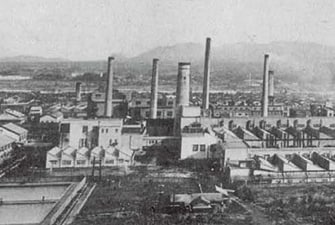#04
Material benefits: how carbon fiber is reducing our environmental footprint
Carbon fiber is a “wonder” material, adding exceptional strength without weight to aircraft, wind turbines and cars. New technologies devoted to improving its production and recycling mean even greater environmental benefits lie ahead.

Carbon fiber has long been hailed a hero in an age of engineered materials. It is an ultra-high-strength, low-weight substance made of strands of carbon atoms in graphite form – the same as that found in pencils – that offers ten times the strength of steel for just a quarter of its weight. The aviation industry uses carbon fiber to build the tail assembly and other structures of aircraft such as the Airbus A310, while the Boeing 787 Dreamliner – the most advanced long-haul aircraft of its type – has a carbon-fiber body.
Because aircraft and vehicles with carbon-fiber bodies are lighter, they require less fuel for propulsion. This has helped the transportation industry reduce its carbon footprint. But with EU lawmakers set to introduce a more ambitious carbon-dioxide reduction target of 45 percent for the transport industry by 2030, further technological breakthroughs are needed to usher in a new era of low-carbon transportation.
The switch to electric vehicles (EVs) powered by renewable energy is at the forefront of such efforts, but in the meantime the automotive industry is under pressure to ensure that all fuel-dependent vehicles remain as light and as fuel-efficient as possible, particularly as the global car fleet continues to grow, driven by demand in emerging economies.
Meanwhile, airplanes are becoming bigger. Since 2013, passenger capacity in the global aviation industry has risen by five to eight percent every year. With the need to transport more people comes an increase in the weight of aircraft and with it the requirement for more fuel – adding to the challenge of reducing emissions.
The rise of carbon fiber
Enter carbon fiber. Carbon fibers are filaments of between five and 10 micrometers in diameter, made of carbon atoms in graphite form. Each strand is almost a tenth of the diameter of a single human hair. They are bound with a material such as epoxy resin, then heated and cured in a giant oven to make carbon-fiber composites.
In the 1960s, new processes led to the production of high-performance carbon fibers, with Japan leading the way. Carbon-fiber composites are now widespread – used in products ranging from bicycles to Formula One cars and from wind turbines to laptop cases. And although modern fibers are stronger than ever, experts say we have only scratched the surface of the material’s potential.
Building on strong foundations
One company digging deeper is Toray – a world leader in developing carbon fiber since the 1970s. In recent years, Toray has developed an advanced product for use in rockets, satellites and aircraft. The highest-quality materials are essential in the aviation and space industries due to the harsh environments to which they’re exposed, and the new T1100G is one of the strongest and most resistant forms of carbon fiber on the market. Innovative carbonization technology was used to control fiber structure at the nano-level to enable it to withstand great tension and compression and to give the material a high resistance to corrosion, creep and fatigue.
The automotive industry is also using carbon fiber in the shift to electric cars. Toray’s flagship electric vehicle, the Teewave AR1, for example, features carbon fiber in its basic structure, including the bonnet, dashboard and roof, while shock absorbers, made from carbon fiber composites, have greater rigidity to offer more protection during crashes. Crucially, the car is also lighter. It weighs a third less than other commercial electric vehicles, reducing CO2 emissions by nine percent.
The carbon fiber of the future
The development of carbon fiber has not been without its challenges – notably, the need to recycle it responsibly. But investment in innovation is starting to pay off. In partnership with Toyota Tsusho, Toray developed the technology to extract and reuse the gas that is emitted when carbon fiber waste is burned.
Another challenge is the cost of carbon-fiber production. Although it has fallen considerably – from more than $100 per pound weight in 1970s to around $10 today – it remains high. Global fiber consumption is expected to more than double from 60,000 tons in 2015 to around 150,000 tons in 2025. If the industry gets the recycling right, it could increase the supply of a lower-cost carbon fiber, thus advancing the feasibility of the material’s use across multiple sectors.
It’s an exciting time in the evolution of carbon fiber. With its rising prevalence in turbine blades for the wind-power sector, lighter automobiles and aircraft, this “wonder” material’s role in an increasingly decarbonized world seems secure.



